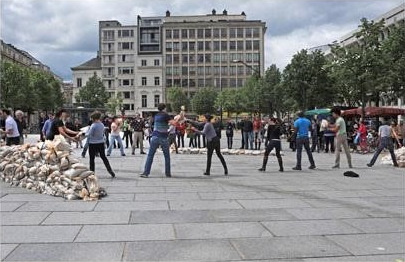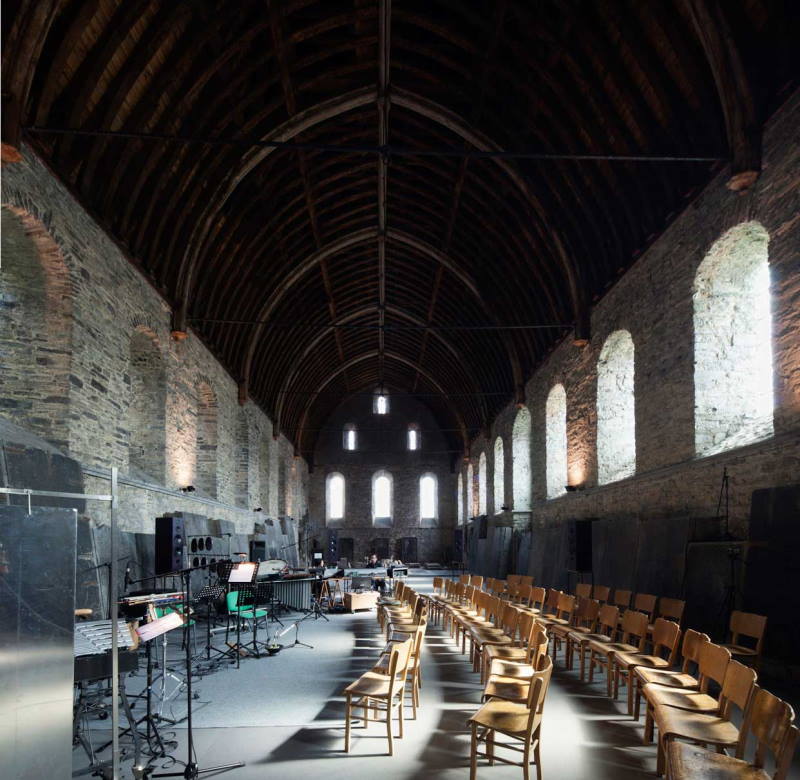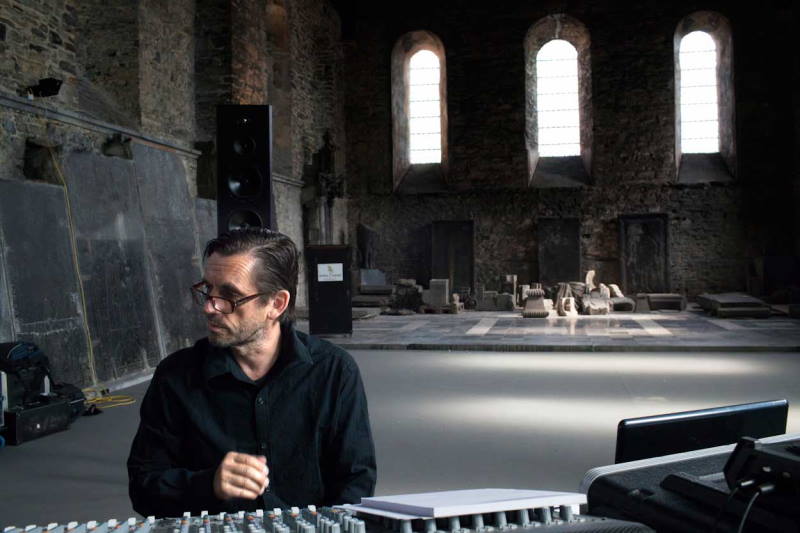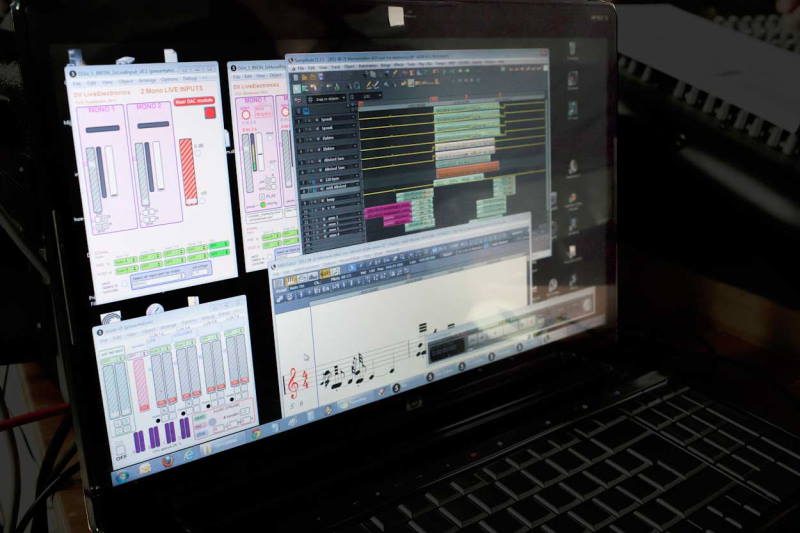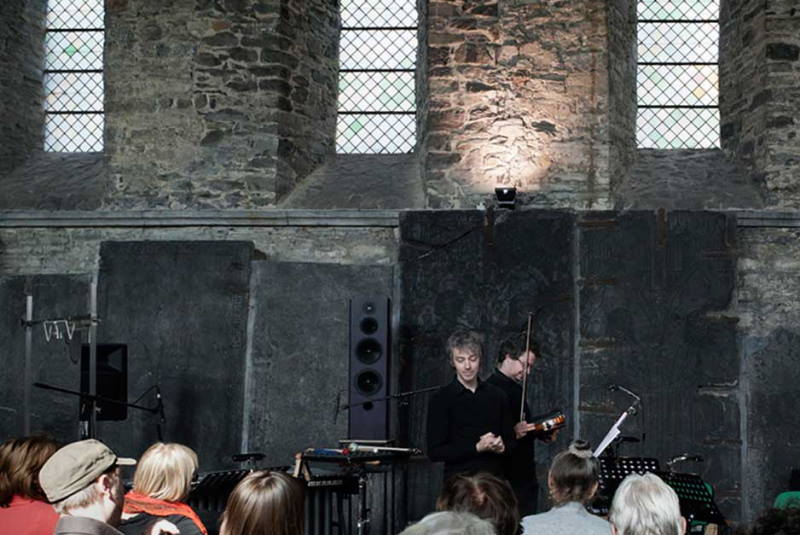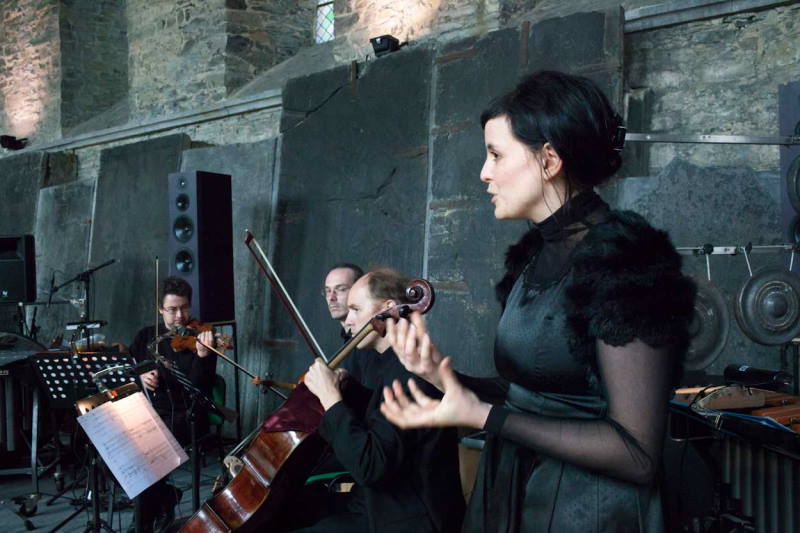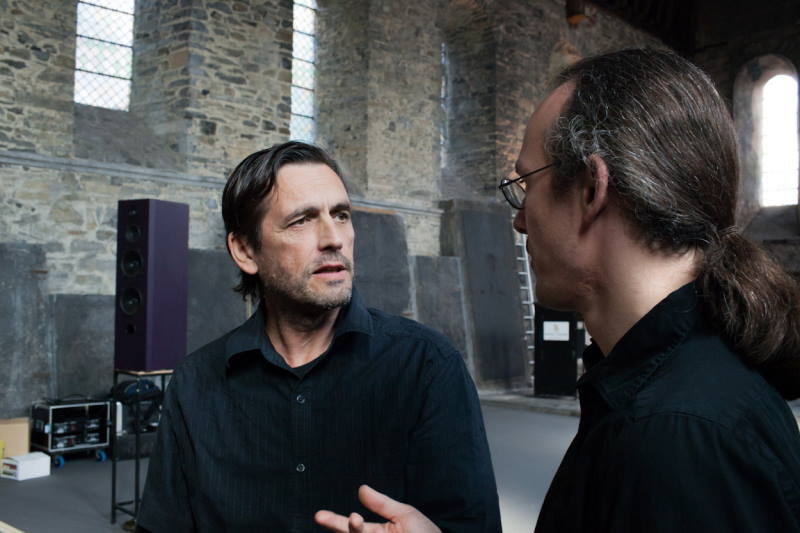T R A C K 2012
When the Ghent art palace S.M.A.K. put its TRACK event on the rails in 2012, the Spectra Ensemble was also a guest. SPECTRA took over the idea of "TRACK" and provided a musical trail through this city exhibition. Three composers worked with SPECTRA on sounds from the city of Ghent and on the history of this city. Joris Blanckaert, Laura Maes and Dirk Veulemans composed electro-acoustic works related to different locations in the city centre of Ghent.
These works were played in short, evolving fragments at various locations throughout the city, evolving from fragmentary sketches to fully developed 'tracks'. On September 15, 2012, during Odegand - that other city festival in Ghent - these final compositions could be heard live in the Refectory of St Bavo's Abbey.
Sounds Surrounding Works of Art
I went out during the opening event of TRACK with a microphone and recorder to follow the trail of the event and to record sounds around the works of art for further processing. After a while, it became clear that this did not bring in much. The sounds that were there anyway, like passers-by, cars, the tram, had in fact little to do with the works of art. That is why I got the idea to record the virtual sound that was going on in people's heads while they were experiencing these performances and the artworks. I did that simply by doing mini-interviews and that has produced some great results.
Electronics and Instrumental
Because the Spectra Ensemble consists of a group of excellent musicians, it was rather obvious to integrate an instrumental component into the composition. I built this component from the acoustic data of three mini-interviews that I selected from my recordings. For this purpose, I programmed a vocoder that received speech as input and produced notes as output. Theoretically, it should even be possible to reconstruct the speech with these notes. Theoretically, that is, because hyper-fast and hyper-accurate musicians who could do such a thing will never exist. The reduction performed by the musicians was not intended to achieve this reconstruction, but rather to transform the interview into a musical statement.
Interview 1/3
At the sandbag performance on the Kouter "Action for a sandbag brigade: Writing the borders of crisis" by Adelita Husni-Bay I asked two spectators what they thought of this performance
The first quote came from a recently retired labourer-farmer's son. He was accompanied by some relatives or friends and they were talking to each other about this performance. Wonder, amazement, amusement is about the mix of feelings that came across to me. Observant, with an open mind and certainly no hostility. That is why the honest answer, and the associations that the performance evokes, radiate a poetic honesty. To my question what meaning he saw in it, he answered:
It is according to art. For art. I don't know the meaning either. I only know one thing, when I was a fourteen year old boy in the sixties, I went to work, and we had to help our dad on the farm: pick up potatoes and put 50-kilo-bags on the wagon. So that was not art, that was work.
This interview led to part 1/3: "According to Art" for marimba and 8-channel electroacoustic sound track
Interview 2/3
At the sandbag performance on the Kouter, the second interviewee was an English-speaking fifty-year-old who was watching with interest. His thoughts, clearly based on a mature life experience, were powerfully but very elegantly summarised in two sentences, thus providing an over-looking, cyclical conservation-of-energy vision, to the idealistic message of the young artist Adelita Husni-Bay.
…I have the idea that this is a transformation of certain fundamentals, like in the basis of a house. You put one thing to the others and new things are born out of old things. And everything stays the same although it's a transformation.… "
This interview led to the complete electronic part 2/3: "Everything Stays the Same".
Interview 3/3
In the work "Museum Cemetery" by Leo Copers with the museum gravestones, a young man responded to the question of what he thought of the gravestones. His belief in the permanence of museums that preserve artefacts deemed important is a beautiful thing and, in my opinion, radiates confidence in the future. :
... it's a moment to think about it, but I don't think that um ... I do believe that it's something that will be eternal ... "
This interview led to part 3/3: "Memento Mori" for viola with live electronics and 8 electro-acoustic sound tracks.
laatste update: 2021.07.15
